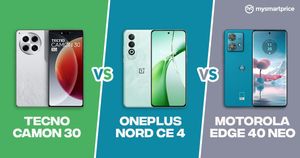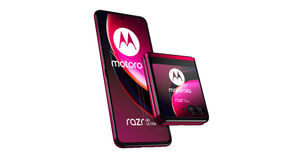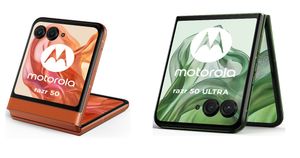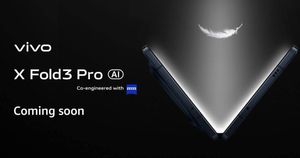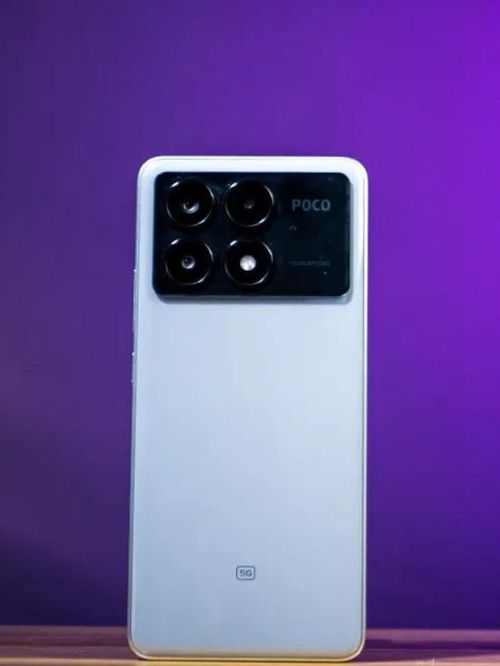- The Moto Razr 40 is the most affordable foldable to date in India.
- The Moto Razr 40 Ultra has a giant exterior display that goes against the Samsung Galaxy Flip 4.
- The Razr 40 offers bare minimum dust resistance, a first for foldable.

Samsung holds a large share of the foldable market with its Galaxy Z Fold and Galaxy Z Flip duo. However, new entrants from Motorola — the Razr 40 and Razr 40 Ultra aim to disrupt the market with their pricing and other features. Motorola has dealt with foldable phones in the past, in the form of the Moto Razr 5G.
But, both the latest clamshell offerings provide valuable upgrades over the last gen — especially the Ultra variant with a massive and more practical cover screen. We spent some time on the phones, and here are our first impressions.
Moto Razr 40 and Razr 40 Ultra First Impressions: Pricing and availability
The Moto Razr 40 is a more affordable option of the two. The device comes in a single 8GB RAM + 256GB storage configuration at Rs 59,999. With the ICICI Bank Credit card and Credit Card EMI transaction offers you can get the phone at an effective price of Rs 54,999.
On the other hand, the Moto Razr 40 Ultra wants to go neck-to-neck with the Galaxy Z Flip 4. It costs Rs 89,999 for the sole 8GB RAM + 256GB storage configuration. The above-mentioned discounts allow buyers to get up to Rs 7,000 in discounts.
Moto Razr 40 First Impressions
The Razr 40 is available in three colours: Sage Green, Summer Lilac, and Vanilla Cream. While all three colourways look quite stunning, we spent most of our time with the Lilac variant. Looking at the pricing difference, it’s quite obvious the younger sibling had to cut some corners. It misses out on a larger cover screen from the Ultra variant but gets a 1.47-inch display instead.
This cover screen immediately reminded us of the Galaxy Z Flip, which had a slightly smaller screen estate. The screen is still useful as it displays recent notifications, contacts, weather details, event details, music, peek display (wannabe always-on), and more. We are yet to check if it allows you to pick up phone calls or reply to texts, though it seems very unlikely.
Unfortunately, the cover screen cannot help you take selfies by displaying a viewfinder. Instead, it displays funny little emoji wallpapers, not useful but still fun. It’s an AMOLED panel that refreshes at 60Hz with a peak brightness of 1000 nits.
The entire screen module protrudes a bit, with two circular cameras accompanying it. It features a 64-megapixel primary camera and a 13-megapixel ultra-wide angle camera. The in-hand experience is quite sophisticated, partially thanks to the faux-leather finish at the back. It has slightly curved sides, which help with the grip. The right side of the device features a volume rocker and a power button which doubles up as a fingerprint sensor.

The Razr 40 is IP52 rated, which means it’s not just water but dust resistant. This is perhaps the first time we see any dust resistance in a foldable, so it’s a pretty big deal.
Motorola has chosen to keep the branding minimal, with a shiny logo on the bottom portion. There’s no extra flamboyance on the hinges. Speaking of which, while the hinge is designed to hold the display for watching content, taking selfies, and more — we found it to be a bit stiffer than the one on the Ultra. When folded, there’s no visible gap on the sides, which is good.
Upon opening the phone, we were greeted by a tall 6.9-inch LTPO OLED display with relatively minimal crease. It features a punch hole cutout at the top, holding a 32-megapixel selfie camera in place. The panel has a refresh rate 144Hz, so the animations were buttery smooth.
The Razr 40 is powered by a Snapdragon 7 Gen 1 chipset, the only phone with this processor in India, as of now. As mentioned, it comes in a lone 8GB LPPDDR4X RAM and 256GB UFS 2.2 storage variant. It packs in a 4,200mAh battery inside with support for 30W wired charging and 8W wireless charging.
Moto Razr 40 Ultra First Impressions
The Razr 40 Ultra is a direct competition to the Galaxy Z Flip 4 (Review) – they’re a little late to the party, but they are there. But, with the massive and very functional cover screen, this one might just have the Flip’s cake and eat it too. The outer display isn’t just big; it’s loaded too. It sports a 3.6-inch pOLED display which covers 100 per cent of the DCI-P3 colour gamut.

The external screen outshines the main screen on the vanilla Razr 40 by having a 144Hz refresh rate. It can also go up to 1100 nits of peak brightness. Currently, the Razr 40 Ultra has the most practical cover screen for a flip phone on the market. It’ll be interesting to see what Samsung does in a couple of months – will it be all backfoot or an aggressive stance?
The cover display in itself acts as an entire smartphone. You can easily open apps, reply to messages, pick up calls, watch movies (barring the awkward black bars), doom scroll through social media apps, and more. It’s protected by Gorilla Glass Victus to avoid scratches when kept in your pocket.
While all that is good, the cover display seems to be missing an oleophobic coating since it picks up smudges left, right, and centre. The outer screen is very helpful while taking selfies, as it acts as a viewfinder.
The bottom right side of the cover display is occupied by a flash and camera module, with a 12-megapixel primary camera and a 13-megapixel ultra-wide angle camera.
On the numbers front, the Ultra seems inferior to the vanilla variant. But hey, remember, megapixels aren’t always everything. We’ll test both phones for their camera output in our full review.
The Razr 40 Ultra is available in two colours: Infinite Black and Viva Magenta — the former has a Gorilla Glass Victus protection on the rear, with a coarse texture. The latter is what caught our eye more often. The colour is very rich, and the back panel is covered in faux leather, which also helps with the ergonomics. The button placements on both phones are the same.
The phone is quite sleek, even when folded. This is thanks to the hinge, which helps lower the gap between the two halves. The hinge is quite solid, and opening the phone with one hand is nearly impossible. In our short period with both phones, we noticed it does not completely open and remains slightly bent. Like the younger sibling, this hinge can also hold the device for watching movies, taking selfies, and more. The Razr 40 Ultra also offers IP52 certification against water and dust.
The inner display is as tall as the Razr 40, but the major difference is the 165Hz refresh rate and 1400 nits of peak brightness. On first impressions, both phones’ displays seem to be quite good, but we can’t comment on it in detail as of now.
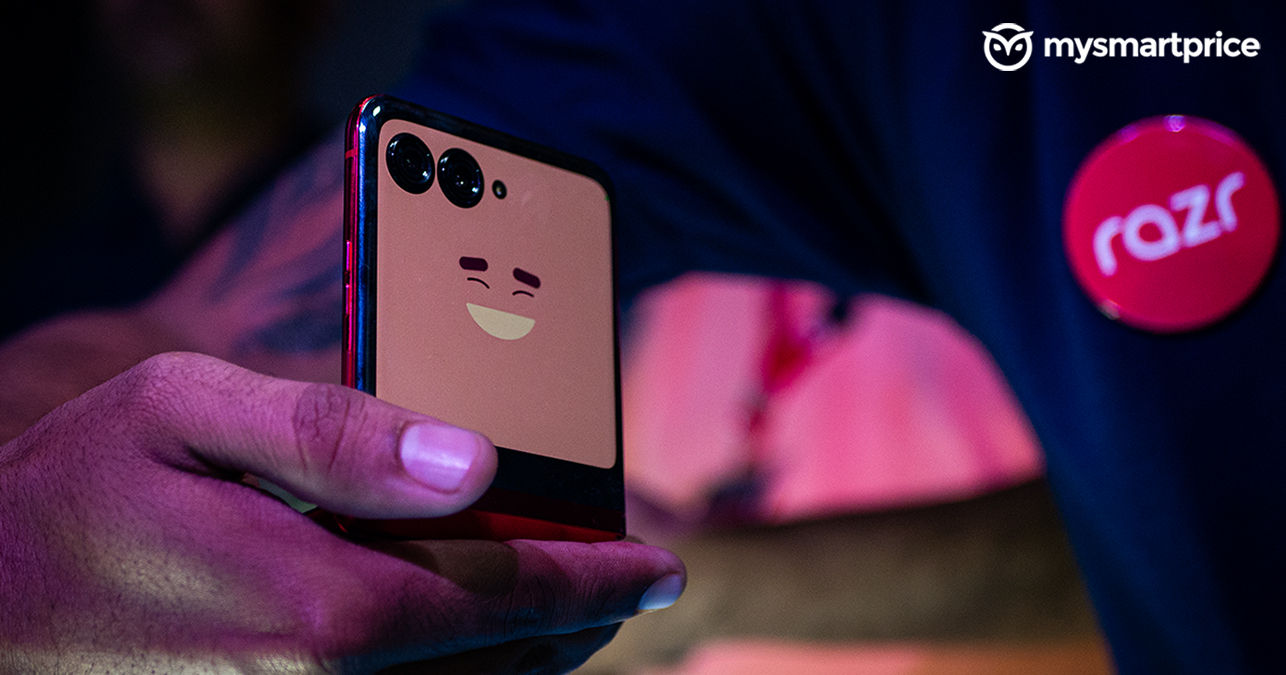
The Razr 40 Ultra is powered by the Snapdragon 8+ Gen 1, another place where it gets the upper hand over its younger sibling. It also has a lone 8GB LPPDDR5 RAM and a 256GB UFS 3.1 storage variant. Inside, the Razr 40 Ultra opts for a smaller 3800mAh battery with support for 33W wired charging and 5W wireless charging. Both foldable run on Android 13 out of the box.
Moto Razr 40 and Razr 40 Ultra First Impressions: Initial thoughts
Both the Razr 40 siblings are, without a doubt, promising offerings from the house of Motorola. The Moto Razr 40 is the cheapest and more accessible clamshell foldable on the market, and its only competitor is the year-old Galaxy Z Flip 3.
While Motorola had to cut some corners in the processing and cover display department, it’s still a good offering for someone who always wanted to flaunt a foldable. The larger battery should help the Razr 40 breathe for extended hours.
On the other hand, the Razr 40 Ultra’s selling point is its massive outer screen. Motorola wants you to stick to the cover screen for almost all of your tasks, and we don’t have an issue with that.
We’ll cover both smartphones in a detailed review soon, so stay tuned to MySmartPrice.










